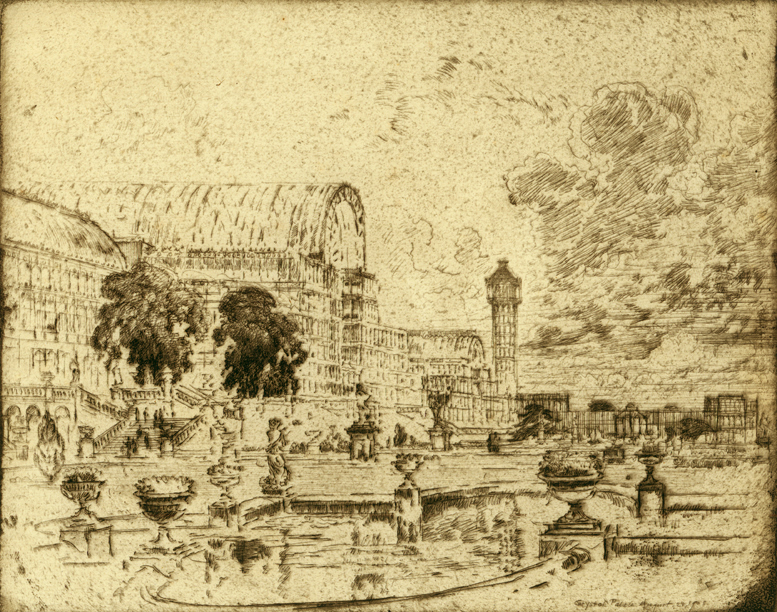![]()
Joseph Pennell. 1857-1926.

The Crystal Palace. 1905. Etching. Wuerth 367. 8 5/8 x 10 15/16 (sheet 9 7/8 x 13). Edition probably 75. A rich, tonal impression printed by Pennell on antique laid paper. Signed, titled, annotated 'imp' and 'plate destroyed' in pencil. $600.
The Crystal Palace was a cast-iron and plate-glass building originally erected in Hyde Park, London, England, to house the Great Exhibition of 1851. Designed by Joseph Paxton, the Great Exhibition building was 1,851 feet ) long, with an interior height of 128 feet. Because of the recent invention of the cast plate glass method in 1848, which allowed for large sheets of cheap but strong glass, it was at the time the largest amount of glass ever seen in a building and astonished visitors with its clear walls and ceilings that didn't require interior lights, thus a "Crystal Palace". After the exhibition, the building was moved to a new park in Penge Common next to an affluent area of London called Sydenham Hill, a suburb full of large villas. The Crystal Palace was enlarged and stood in the area from 1854 to 1936, when it was destroyed by fire. It attracted many thousands of visitors from all levels of society. The name Crystal Palace (the satirical magazine Punch usually gets the credit for coining the phrase) was later used to denote this area of south London and the park that surrounds the site, home of the Crystal Palace National Sports Centre.
![]()
To order, to report broken links or to be placed on the email list, please contact Jane Allinson (jane@allinsongallery.com) or fax (860) 429 2825.